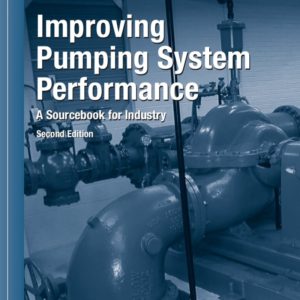How to Improve Pump System Performance
 Want to know how to improve your pump system performance? The U.S. Department of Energy’s Industrial Technologies Program (ITP) and the Hydraulic Institute (HI) have produced a guide called Improving Pumping System Performance: A Sourcebook for Industry. Their other guides include: compressed air systems, fan and blower systems, motors and drives, steam systems, and process heating systems.
Want to know how to improve your pump system performance? The U.S. Department of Energy’s Industrial Technologies Program (ITP) and the Hydraulic Institute (HI) have produced a guide called Improving Pumping System Performance: A Sourcebook for Industry. Their other guides include: compressed air systems, fan and blower systems, motors and drives, steam systems, and process heating systems.
According to the guide, This Pump System Performance sourcebook is designed to provide pumping system users with a reference that outlines opportunities for improving system performance. It is not meant to be a comprehensive technical text on pumping systems; rather, it provides practical guidelines and information to make users aware of potential performance improvements. Guidance on how to find more information and assistance is also included.
Throughout this sourcebook, performance and efficiency improvements are described in terms of a “systems approach.” For cost-effective operation and maintenance of pumping systems, attention must be paid not just to individual pieces of equipment but to the system as a whole. A systems approach to optimizing a pumping system analyzes both the supply and demand sides of the system and how they interact, shifting the focus from individual components to total system performance.
Often, operators are so focused on the immediate demands of equipment that they overlook the broader question: How do the system’s parameters affect this equipment? For example, frequently replacing pump seals and bearings can keep a maintenance crew so busy that they overlook the system operating conditions that are causing most (or all) of the problems.
A systems approach involves the following types of interrelated actions:
- Establish current conditions and operating parameters
- Determine present and estimate future process production needs
- Gather and analyze operating data and develop load duty cycles
- Assess alternative system designs and improvements
- Determine the most technically and economically sound options, taking into consideration all of the subsystems
- Implement the best option
- Assess energy consumption with respect to performance
- Continue to monitor and optimize the system
- Continue to operate and maintain the system for peak performance
To use a systems approach effectively, a pumping system designer needs to understand system fundamentals, know where opportunities for improvements are commonly found, and have a list of key resources that can help to identify and implement successful projects.
Guide to Improving Pump Performance - 117 pages
Section 1: Pumping System Basics
- Pumping System Components Pumping System Principles
Section 2: Performance Improvement Opportunity Roadmap
- Assessing Pumping System Needs
- Common Pumping System Problems
- Indications of Oversized Pumps
- Piping Configurations to Improve Pumping System Efficiency
- Basic Pump Maintenance
- Centrifugal Pumps
- Positive Displacement Pump Applications
- Multiple Pump Arrangements
- Pony Pumps
- Impeller Trimming
- Controlling Pumps with Adjustable Speed Drives
Section 3: The Economics of Improving Pumping Systems
Download Pump Performance Improvement Guide




